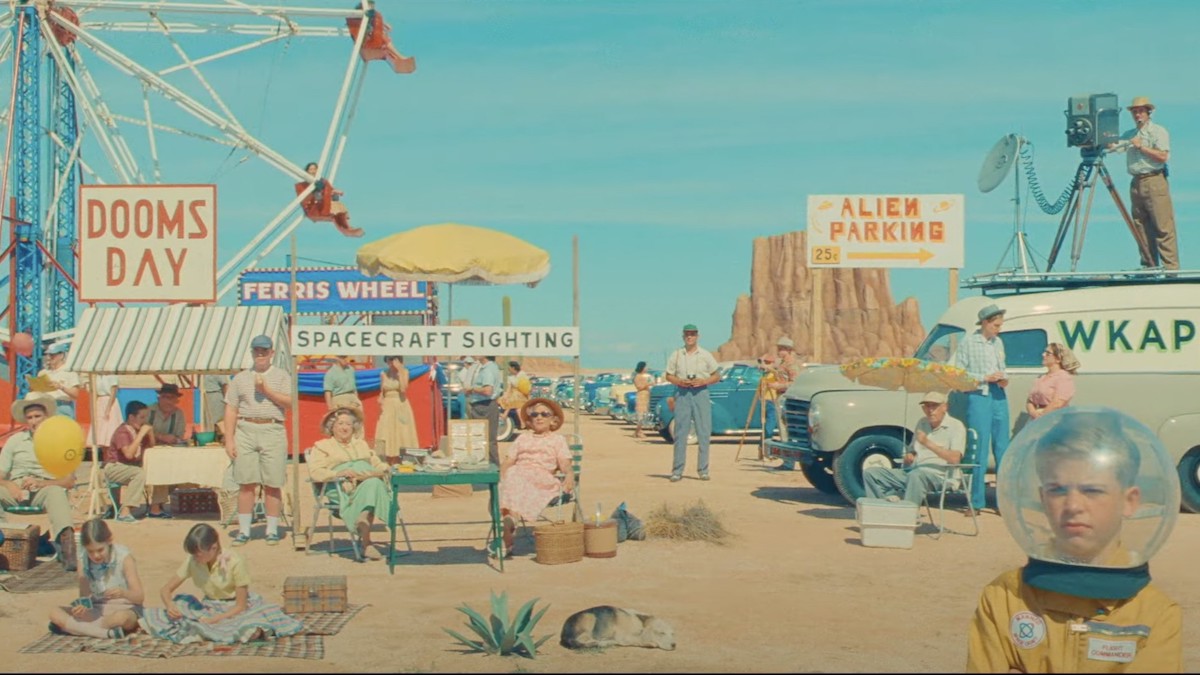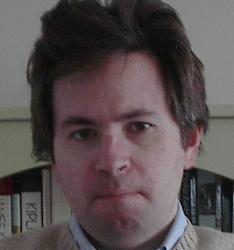During his past decade or so of directing, Wes Anderson has done his darnedest to make audiences forget he’s an American. His most recent films have been set in elaborately imagined fictional versions of Budapest (2014’s The Grand Budapest Hotel), Japan (2018’s Isle of Dogs), and France (2021’s The French Dispatch). Anderson has even adopted the lifestyle of an expatriate; born and raised in Texas, the 54-year-old filmmaker has long considered Paris his base of operations.
None of this would matter were it not for the fact that Anderson’s best films always reflected where he was from rather than where he was going. Bottle Rocket (1996) and Rushmore (1998) not only took place in the Lone Star State but savored the tiny emblems of the American way of life, like science fairs and firecrackers, and relished a wide variety of distinctively American types—from Owen Wilson’s hard-charging would-be con in Bottle Rocket to Jason Schwartzman’s resourceful high-schooler and Bill Murray’s midlife-crisis-addled businessman in Rushmore.
In his recent films, though, Anderson has seemed less and less the kid with big dreams from Texas and more and more the auteur with big budgets living in Paris—a trend, happily, broken in his latest film, Asteroid City, which unfolds in the filmmaker’s inimitably fanciful vision of the American Southwest in the 1950s. Although it was photographed on locations and stages in Spain, the film represents in every other way an aggressive return to home turf.
Like Ferde Grofé’s Grand Canyon Suite, George Balanchine’s Stars and Stripes, and Leonard Bernstein’s On the Town, Asteroid City is the work of someone who unambiguously loves America. This time, Anderson’s usual spray of cultural references have a particularly homespun quality: there’s talk of telescopes and stargazing, picnic suppers of chili and frankfurters, Tupperware containers and stacks of flapjacks. Characters say things like “Holy Toledo.” Much of the pretension has gone out of him.
As presented in the movie, Asteroid City (pop. 87) is itself a testament to a pioneer spirit that still prevailed at midcentury. Springing up around a crater at the town’s center are the signs of an advanced civilization confident in itself—namely, ours: a welcoming motor court, cozy cottages, an observatory, a diner. The color scheme is in pleasing pastels; the surfaces are glossy and glistening. Most everything looks new and shiny, including the soda machines and the gas station. In envisioning a town built from scratch during the Space Age, Anderson has found the perfect application for his meticulous, overly polished visual style.
Among the outsiders beckoned to Asteroid City to partake in a Junior Stargazer event are the Steenbeck family—or its remnants. War photographer Augie Steenbeck (Schwartzman, in one of his most substantial roles in an Anderson film since Rushmore) is the sole surviving parent to his teenage son (and Stargazer participant) Woodrow (Jake Ryan) and three young daughters named Andromeda, Pandora, and Cassiopeia (Ella, Gracie, and Willan Faris).
Grizzled, bearded, stoical Augie has resisted telling his children the news of their unwell mother’s demise until their arrival in Asteroid City. “You’re saying our mother died three weeks ago?” Woodrow asks his father. “Did you already know, Woodrow?” Augie asks his son in the same tone a parent might use to ask a child if he had begun to have doubts about Santa Claus. Even so, Anderson is a firm believer in the resourcefulness of children—a theme in one of his favorite films and biggest influences, Francois Truffaut’s Small Change. The Steenbeck sisters improvise a burial service in the desert sand for their dear departed mother, whose remains are housed in a Tupperware container.
Coursing through the film is an entirely ecumenical expression of religious sentiment. The Steenbeck children must have come by their instinct to bury the dead through their frequently mentioned Episcopalian upbringing. Meanwhile, a pretty elementary school teacher named June (Maya Hawke) has in her charge a gaggle of rowdy youngsters who’ve come to Asteroid City by bus and who make a mild mockery of the act of saying grace by thanking the Lord for all the elements of a sandwich: the onions, the relish, the pickles … Even movie star Midge Campbell (Scarlett Johansson, who is both chipper and dissipated) regards her profession as something of a calling. When she inveigles Augie to rehearse a scene with her, she urges him to draw upon his own increasingly bereft state of mind.
We might assume that Anderson is making antagonists of religion and science, but in the film’s conception, science is about the pursuit of something as grand, unpredictable, and unknowable as any god. “If you wanted to lead a nice, quiet, peaceful life, you picked the wrong time to be born,” General Grif Gibson (Jeffrey Wright) tells the Junior Stargazers in a rat-a-tat speech that places the Space Age in the context of two world wars and a century that would come to be known as America’s own.
Asteroid City taps into that spirit of American self-confidence. After a flying saucer manned by a moody alien wreaks havoc with the Junior Stargazer proceedings, the military whips itself into a panic by imposing a quarantine and ordering medical and psychological testing. But the residents of and visitors to Asteroid City remain hopeful and curious about their visitor from another planet. The singing cowboy Montana (Rupert Friend) tells the children that if the alien turns out to be a “dirty dog,” the armed forces will take care of everything—“and they haven’t lost a war yet.” Before giving an already-planned astronomy lesson, June confesses, “I suspect that some of our information about the solar system may no longer be completely accurate,” but she proceeds anyway. A boy prays “Our alien who art in heaven”; a hoedown ensues. Notes Augie’s well-to-do father-in-law Stanley (Tom Hanks): “I’m in no hurry. I like the desert. I like aliens.” That’s the spirit. We are a peaceable people.
Hotly debated has been Anderson’s choice to frame this narrative as a “play-within-a-film”—that is, the events described above are not supposed to have actually happened but are instead a visualization (in color and in widescreen) of a play called Asteroid City written by playwright Conrad Earp (Edward Norton). The events of the story are interspersed with segments from a black-and-white TV show purporting to recount the evolution and production of the “play”; Bryan Cranston is the Edward R. Murrow–like host.
Some may argue that this framework is unnecessary and, technically speaking, it is. At the same time, it’s tempting to regard the many scenes of the “play” taking shape—scenes of Earp writing, of the actors improvising, of understudies becoming leads—as Anderson’s apologia for his own acts of creation. He has faced much criticism and considerable parody for his increasingly self-referential, self-involved films, but in showing us how a work of fiction—specifically, theone that we are watching—comes into existence, he is telling us that such works matter. At one point, the “actors” repeat the words “You can’t wake up if you don’t fall asleep” as a kind of incantation; by the film’s logic, “falling asleep” is akin to getting lost in a story, and “waking up” is like finishing that story with a better understanding of life or love or the stars above.
Asteroid City is the most charming, expressive, and personal film Anderson has made in years. How else to describe a movie in which the arrival of a being from outer space is met by an elementary school student making a model flying saucer

